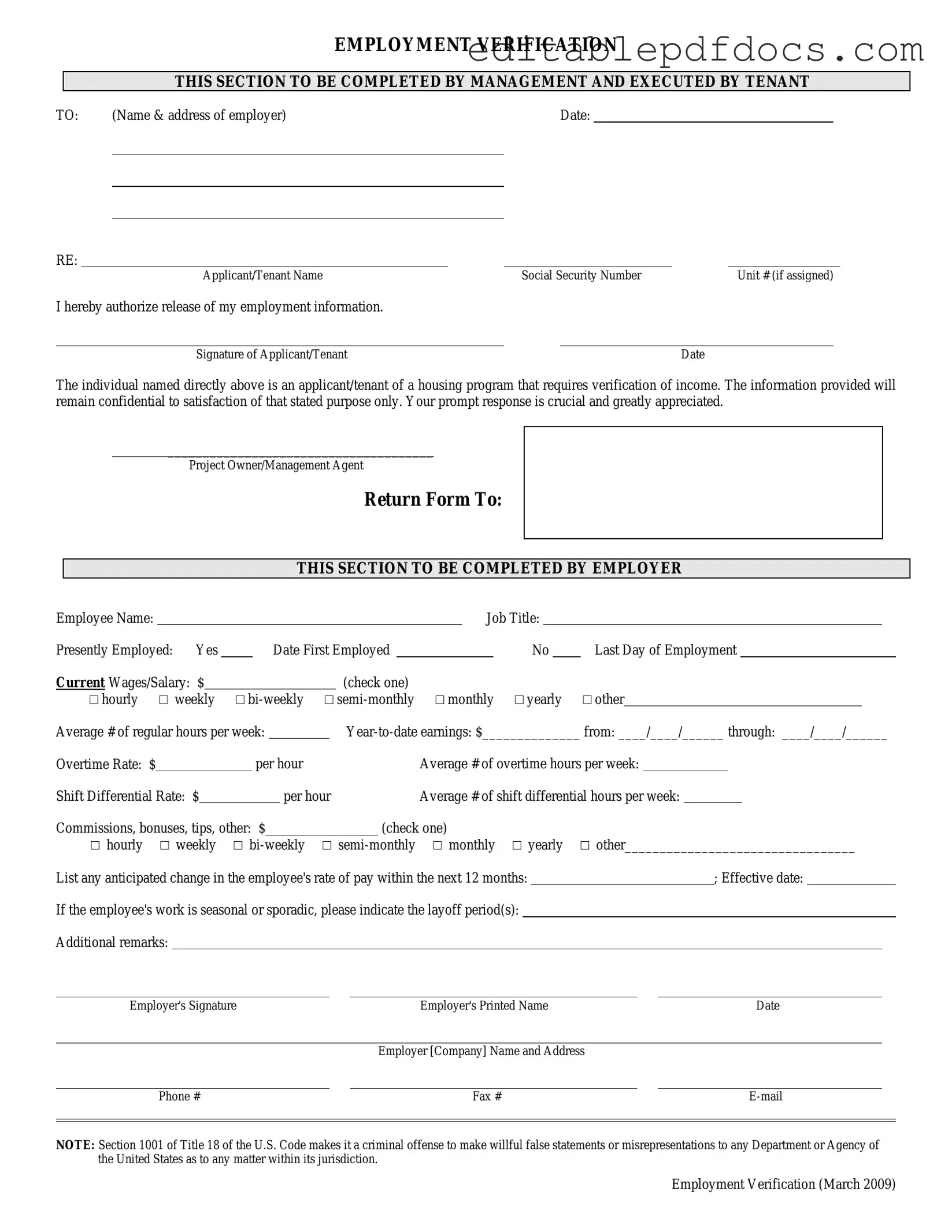Filling out an employment verification form can seem straightforward, but many individuals make common mistakes that can delay the process or lead to inaccuracies. One frequent error is providing incomplete information. Omitting details such as job titles, dates of employment, or specific duties can create confusion and may result in a rejection of the verification request.
Another mistake is failing to double-check the accuracy of the information provided. Typos or incorrect dates can lead to significant issues. Employers rely on this information to make informed decisions, and inaccuracies can undermine trust.
Many people also overlook the importance of using the correct format. For example, writing job titles or dates in an inconsistent manner can create difficulties for the verifier. Consistency is key in ensuring that the form is easily understood and processed.
Additionally, individuals sometimes forget to include their contact information. This omission can hinder the verification process, as employers may need to reach out for clarification or additional details. Providing a phone number and email address is essential.
Another common error is neglecting to sign and date the form. A signature is often required to validate the information provided. Without it, the form may be considered incomplete, leading to delays in the verification process.
Some individuals fail to understand the specific requirements of the form. Each employer may have different criteria for what information is necessary. Not adhering to these guidelines can result in a form that does not meet the employer's needs.
Lastly, not following up after submission can be a mistake. Once the form is submitted, it is advisable to check in with the employer to confirm receipt and clarify any questions they may have. This proactive approach can help ensure a smooth verification process.
